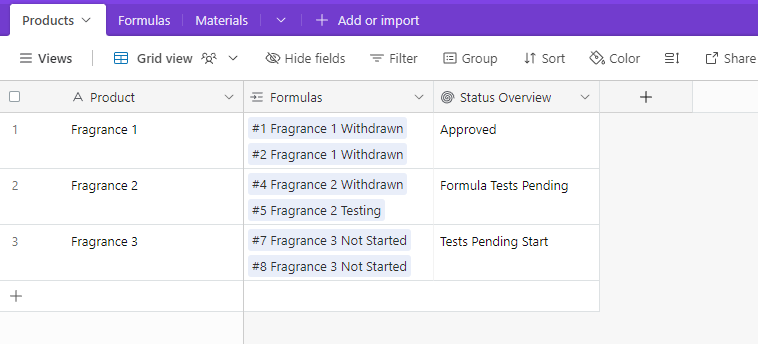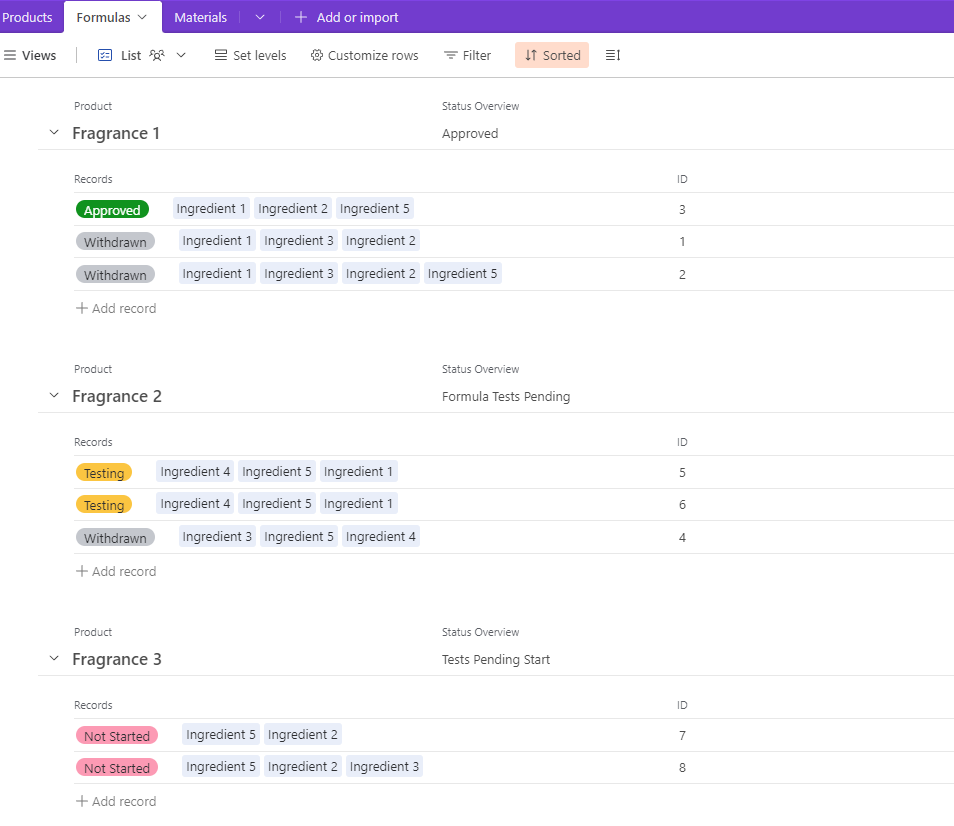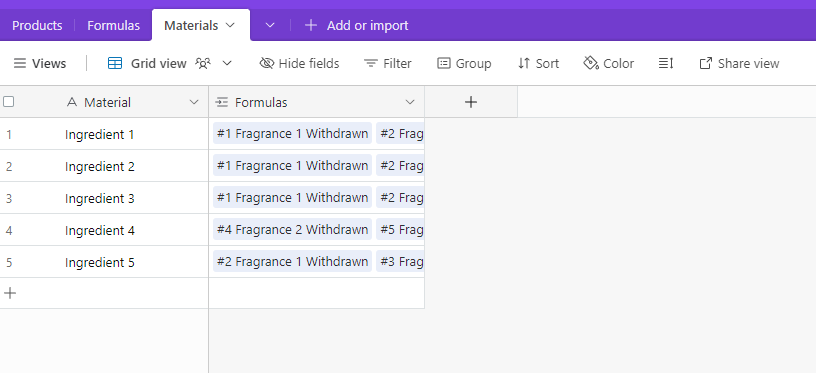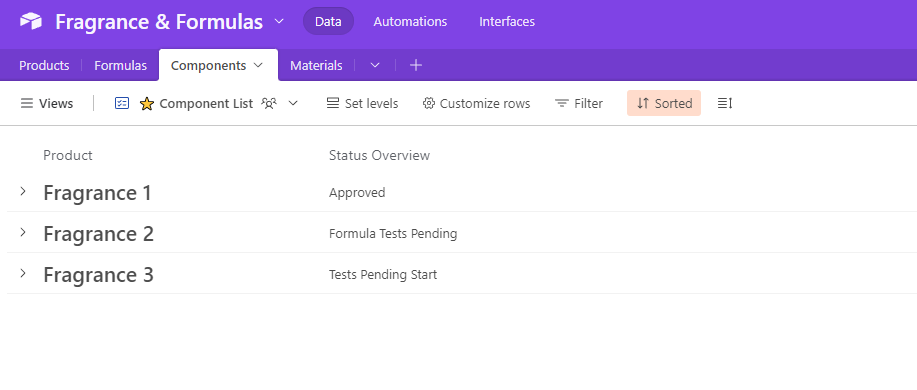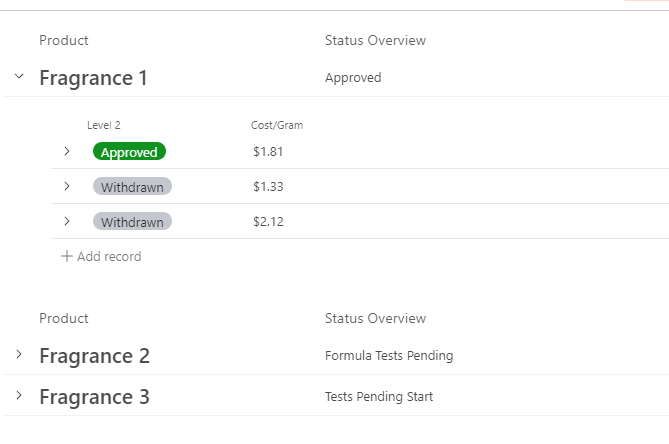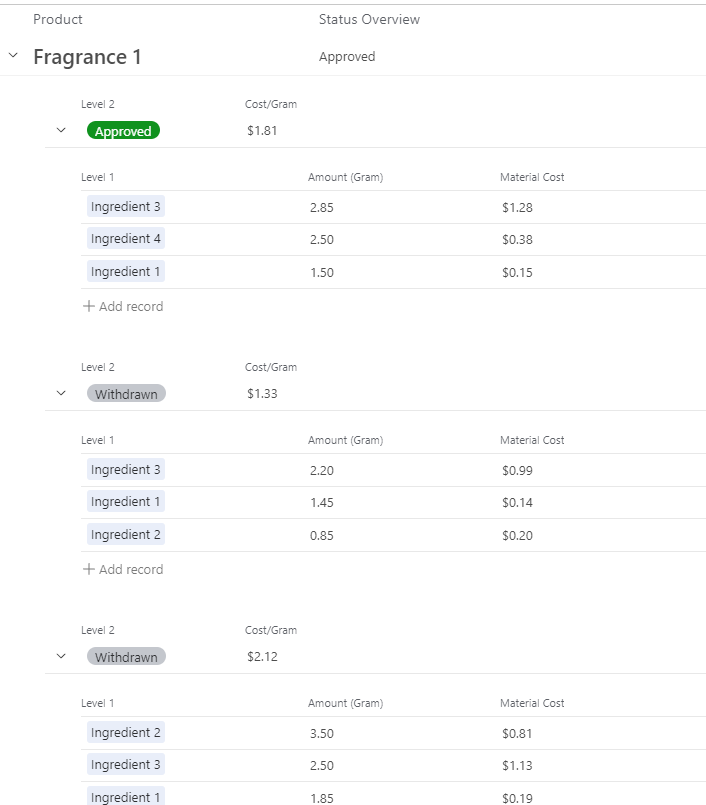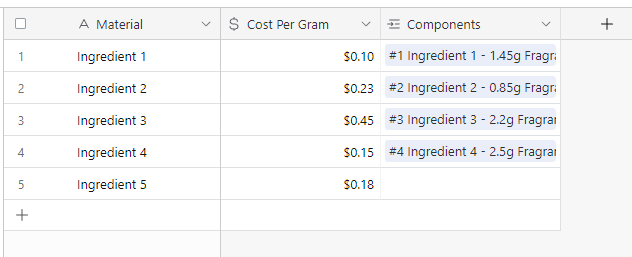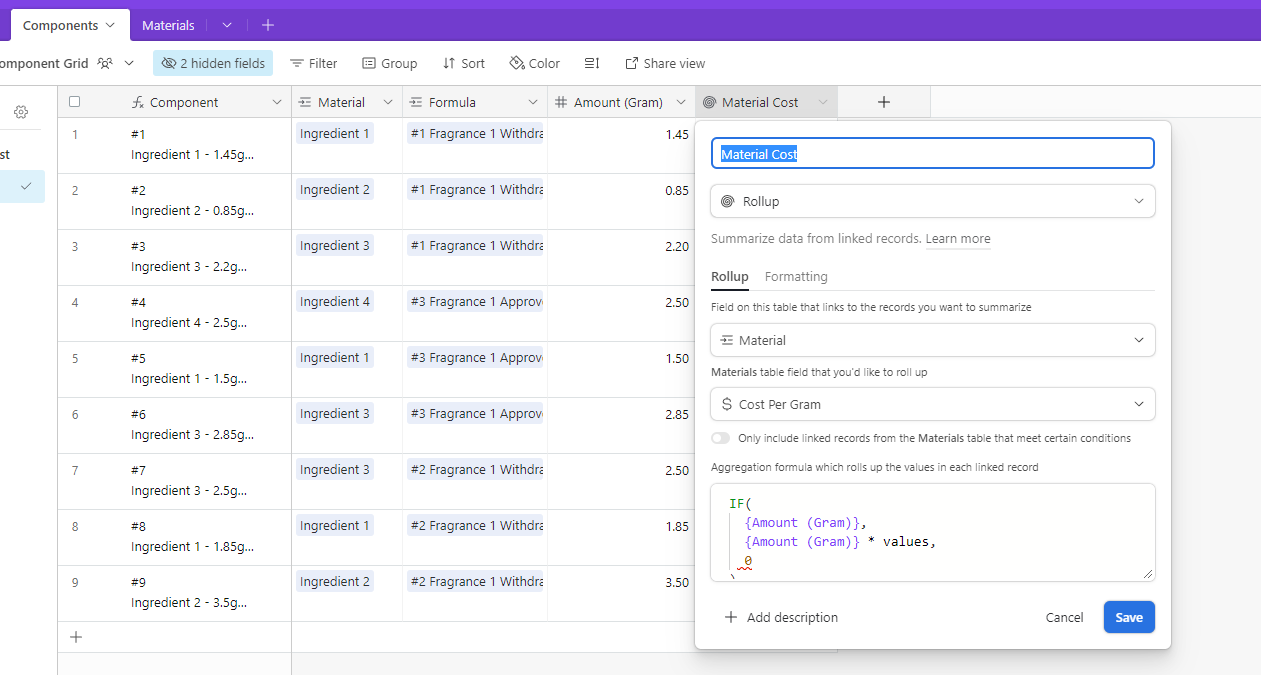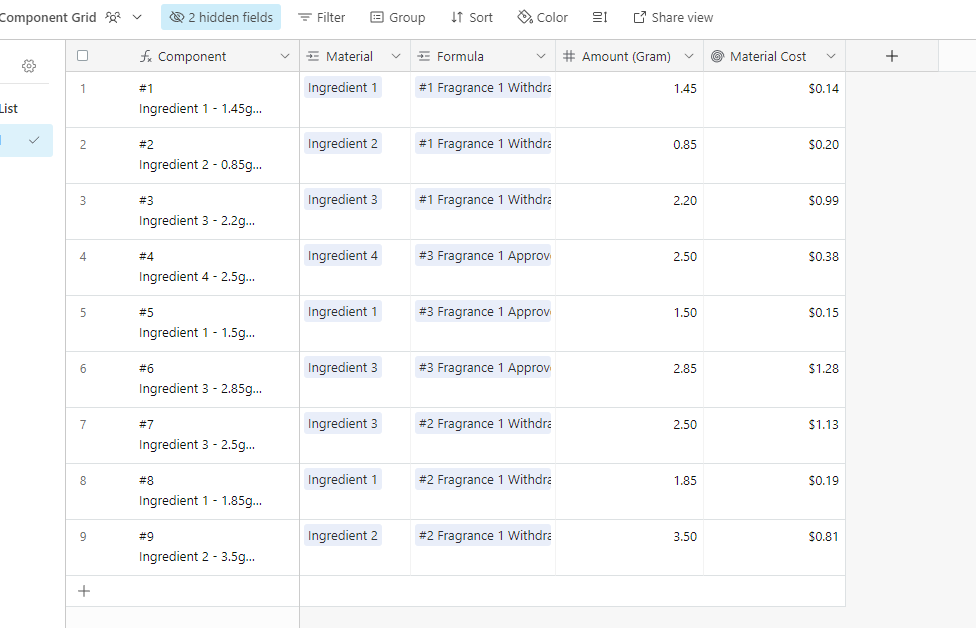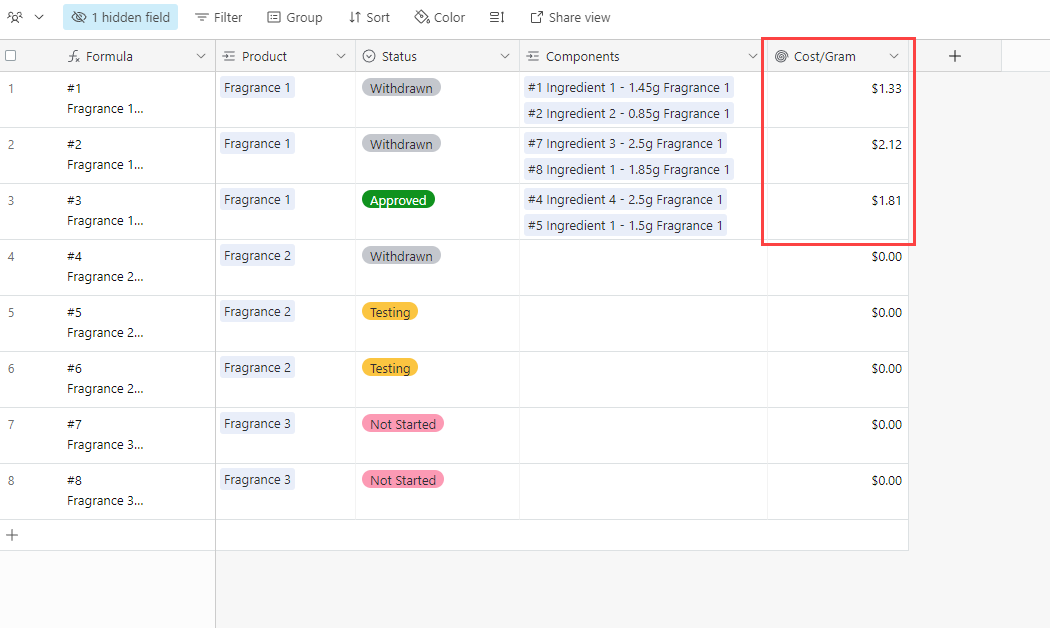We are using Airtable to inventory and create our perfume formulas. We have one Base for the Working Formulas. We would like to create a table that automatically creates a record whenever a new table is created in the base. This way we will be able to track its progress, etc. Is that doable or should we just create the records manually?
Creating master list of tables
 +2
+2Enter your E-mail address. We'll send you an e-mail with instructions to reset your password.



